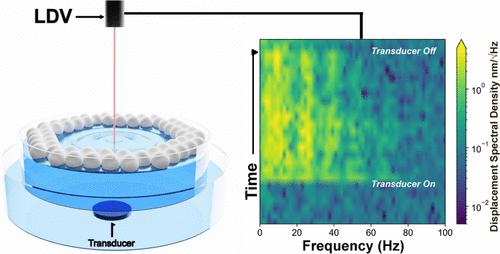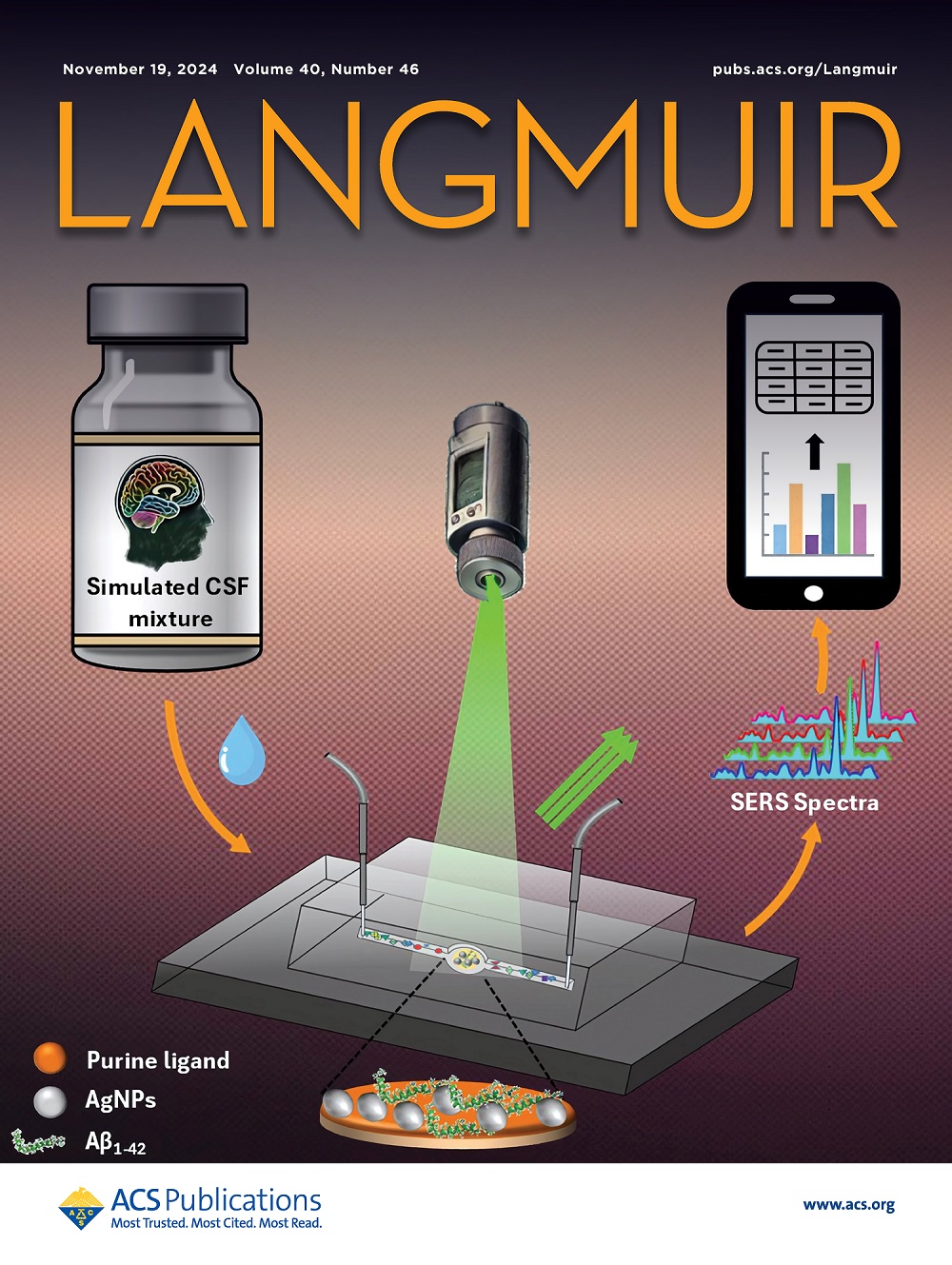Capillary Wave-Assisted Colloidal Assembly
IF 3.7
2区 化学
Q2 CHEMISTRY, MULTIDISCIPLINARY
引用次数: 0
Abstract
The self-assembly of nanoparticle colloids into large-area monolayers with long-range order is a grand challenge in nanotechnology. Using acoustic energy, i.e., acoustic annealing, to improve the crystal quality of self-assembled colloidal monolayers is a new solution to this challenge, but the characterization of the capillary waves driving the annealing process is lacking. We use a laser Doppler vibrometer and optical diffraction to uncover the frequency-dependent effects of capillary waves on the real-time self-assembly of submicrometer diameter polystyrene nanospheres at an air–water interface. Our study unambiguously demonstrates that low-frequency, e.g., sub-100 Hz, capillary waves are key to improving the long-range order of colloidal monolayers on an air–water interface. Furthermore, we demonstrate how a simple immersion transducer can generate capillary waves and how transducer placement and design affect vibrational spectra. Lastly, we show that frequency-shift keying of a high-frequency focused transducer provides a straightforward method of exciting low-frequency capillary waves that are effective at forming colloidal monolayers with excellent crystal quality, exhibited by grains over 3.5 cm2.

求助全文
约1分钟内获得全文
求助全文
来源期刊

Langmuir
化学-材料科学:综合
CiteScore
6.50
自引率
10.30%
发文量
1464
审稿时长
2.1 months
期刊介绍:
Langmuir is an interdisciplinary journal publishing articles in the following subject categories:
Colloids: surfactants and self-assembly, dispersions, emulsions, foams
Interfaces: adsorption, reactions, films, forces
Biological Interfaces: biocolloids, biomolecular and biomimetic materials
Materials: nano- and mesostructured materials, polymers, gels, liquid crystals
Electrochemistry: interfacial charge transfer, charge transport, electrocatalysis, electrokinetic phenomena, bioelectrochemistry
Devices and Applications: sensors, fluidics, patterning, catalysis, photonic crystals
However, when high-impact, original work is submitted that does not fit within the above categories, decisions to accept or decline such papers will be based on one criteria: What Would Irving Do?
Langmuir ranks #2 in citations out of 136 journals in the category of Physical Chemistry with 113,157 total citations. The journal received an Impact Factor of 4.384*.
This journal is also indexed in the categories of Materials Science (ranked #1) and Multidisciplinary Chemistry (ranked #5).
 求助内容:
求助内容: 应助结果提醒方式:
应助结果提醒方式:


